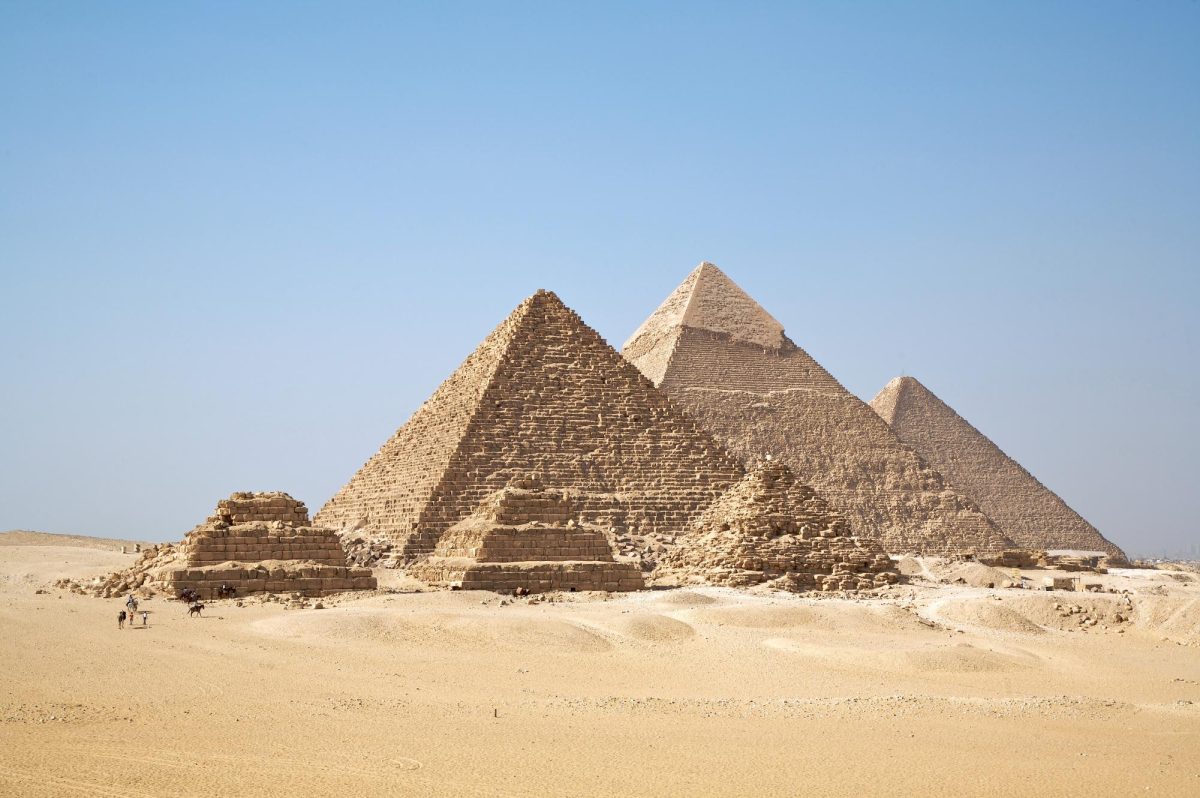The Egyptian pyramids were a great creation in the early ages, with their large, daunting architecture and the sheer effort needed to build these structures. Deep within these pyramids are ancient records of the Egyptian people, including their lineage, their stories, and their gods. Hieroglyphics, depictions of pictures used to create one of the oldest writing systems in the world, used specific carvings of animals and items to tell these ancient stories.
Deep within the tombs of the pyramids, these hieroglyphs were carved into the murals along the walls with bright depictions of the stories of their pharaohs and gods.
The Egyptian gods are truly a marvel, often portrayed as half human half animal, with specific symbols surrounding their figures. One of the oldest deities in the Egyptian Pantheon, an elite assembly of gods, is the god of the sun, Ra. Ra was thought to be the embodiment of the sun itself, riding his chariot across the sky in the day and descending into the underworld at sunset.
The sun god had a lot of influence in the development of other gods, and is associated with the life-giving sun. Ra had eventually created the first generation of gods, known as Shu, Tefnut, Geb, and Nut. These various children of Ra were created to give life to the air, earth and sky.
Ra is portrayed in the pyramid texts as the ruler of gods; the ruler of divine order and balance. In hieroglyphics and murals, he is always depicted as a falcon headed male with a solar disc above his head.
Another ancient goddess that was well known is Isis. Her name originates from the Egyptian Eset, or the throne, which refers to her stability and caring nature towards every pharaoh. Isis was often portrayed as the selfless giving mother who took human wellbeing before her own. It was believed that Isis brought fertilization and great harvests to the land.
Isis was also closely related to maternity and the fertility of women and eventually the protector of the dead as Egyptian culture spread across Rome. This fertility god was also one of the only gods who had been unanimously worshiped all throughout Egypt.
Isis’ counterpart, Anubis represented the process of death and the afterlife. Anubis is also the god of mummification, a process the Egyptians used to preserve the body and honor the soul. After a person passed away, they would preserve the dead body and embalm the flesh.
The internal organs were first removed, and the body would be covered in salt for around 70 days. After this process, the body would be fully preserved and they would stuff the body with linen, herbs, and sand. The body would then be wrapped and placed in a sarcophagus, where their family would place amulets and texts to safely guide the soul into the afterlife.
The funeral would often include a celebration of life, musicians, dancers and priests to pray over the body. Anubis was also the guardian of the tombs, which is where the Egyptians buried and kept their deceased. Any piligers or graverobbers who disturbed the graves guarded by Anubis were said to be cursed. Anubis was not only a great guardian of the tombs, but also the guide who brought souls to the afterlife.
Typically, the death god Anubis is depicted as a black canine, a jackal dog with pointed ears, or as a man with the head of a jackal. The color black was picked as a symbol of the decaying body, as well as the fertile soil of the Nile river, which represented regeneration and life.
Anubis played a huge role in assisting souls to the afterlife, as well as judging souls fit for punishment due to their past transgressions or rewarding those who did good to the fields of the afterlife.
Egyptian culture is vast and deep as you delve into their religions, their gods, and their history. Their culture and innovations spread throughout the world, especially with their processes of mummification, medicine, agriculture, and engineering and amazing architecture.For more information, please visit www.worldhistory.org/article/884/gods–goddesses-of-ancient-egypt—a-brief-history/.



